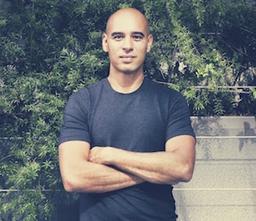One of the biggest sources of difficulties for every single human being is the desire for people to be a certain way.
We can’t seem to help it: we want the world to be the way we want it. Unfortunately, reality always has different plans, and people behave in less-than-ideal ways.
The problem isn’t other people. It’s our ideals.
Yes, I think it would be great if people stopped killing animals for food and fashion, and became vegan instead. But that’s not the reality I’m faced with, and it’s not going to happen for quite some time, if ever.
Yes, I think it would be great if my kids behaved perfectly all the time, but that’s not the reality of kids. Or any human beings, for that matter.
Yes, it would be great if my wife always agreed with me, but that’s not going to happen.
- We have ideals about how people should act, or ways we’d like them to be.
- People don’t act in those ideal ways, or aren’t the way we’d like them to be.
- We get bothered by that reality. Frustrated, angry, sad, disappointed, stressed.
- This makes us unhappy, and damages our relationships with others.
- Stick rigidly to the way we want people to be, and be upset when they don’t meet those ideals.
- Stick rigidly to the way we want people to be, and try really hard to make them be that way. (This pretty much never works.)
- Let go of the ideals and be happier and less frustrated.
Objections to Letting Go
When people are confronted with the idea of letting go of their ideals about other people, they usually have a few objections:- Objection: But then people get away with bad behavior. There’s a difference between wanting someone to behave a certain way (and getting upset when they don’t) … and accepting that a person is acting a certain way, and then compassionately finding an appropriate response. In the first case, you are angry at them for their behavior, and your response out of anger is likely to make things worse. In the second case, you aren’t bothered too much, but can see that their behavior is harmful and want to help them not harm. You can’t actually control them, but you can try to help. If you try to help but need them to accept your help, then it will be continued frustration. Help but let go of the ideal outcome you’d like from your offered help.
- Objection: But what about abusive behavior? There’s a difference between being agonized about the abuse, and accepting that the person is abusive and taking appropriate action. Letting go of your ideals about how the abusive person should act doesn’t mean you let them abuse you. It just means you accept that they are an abuser, while taking the appropriate action of getting away from them, and reporting them or seeking help for them if it’s appropriate. Don’t leave yourself in a place where you’re being harmed, but that doesn’t mean you have to be afflicted by someone else’s actions.
- Objection: But then we don’t make the world a better place. If people behave in less-than-ideal ways, you can agonize about it while trying to change them, or you can accept that the world is not ideal … but calmly and compassionately work to help others. In both cases, you’re trying to do good … but in the second case, you’re not agonizing about how things are.
Letting Go of Ideals
So how do you let go of wanting people to be a certain way?At this point, you can decide to try a different pattern.
So now, you can practice a different way of being.
- Instead of fixing on one way this person (or situation) should be, be open to other possibilities. Open yourself to lots of different ways this person or situation can be.
- Try to understand the person, rather than judging them based on limited information. Try to understand why they’d act this way — perhaps they are afraid. Perhaps they’re suffering in some way. Perhaps this is their strategy for protecting themselves.
- Try to see the good-hearted nature of their actions, rather than one where they are a bad person. For example, you might see that they are tender-hearted and afraid, and so are acting out of fear. Or they just want to be happy, and this is their strategy for being happy. Or maybe they have good intentions and want to help, but are misguided. We all have a good heart deep down inside, but it might take several layers to see that. Anger can stem from jealousy which stems from insecurities and fear, which stems from a tender-hearted worry that we’re not good enough. The angry action isn’t justified, but there is still a good heart at the core.
- See their suffering that causes their actions and know that you have suffered in the same way. Remember how that suffering feels, so you can see what they’re going through. Compassionately wish for an end to their suffering.
- Tell yourself that you don’t know how people should act. Honestly, I don’t always know how I should act … I am fooling myself if I think I know how other people should act. Instead, I might be curious about their actions.
- See the other person as a teacher. They are helping you practice mindfulness, and let go of your old patterns. They are teaching you about reality vs. ideals, about how humans act.
- Relax. Seriously, see the tightness you’re holding, and just relax. Smile. Be happy in this present moment.
- Practice see the goodness in the other person, in yourself, and in the present moment. There is always an underlying goodness in this moment, if you choose to notice. Trust in this goodness, and you’ll be afraid less and happier more.






